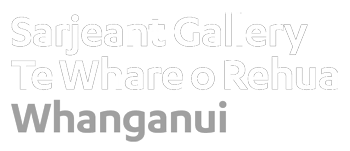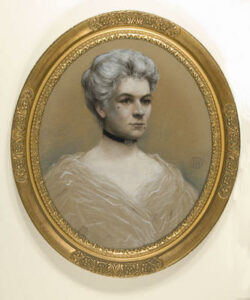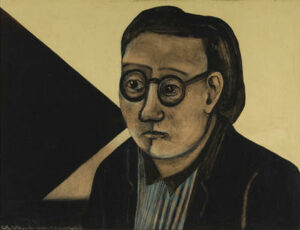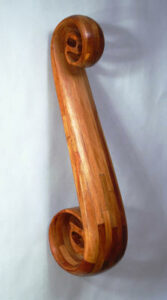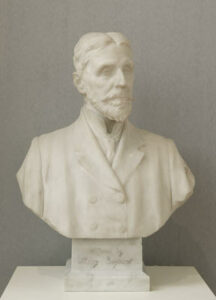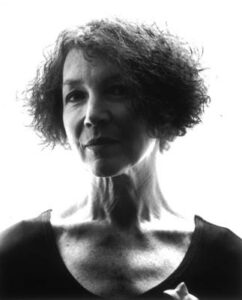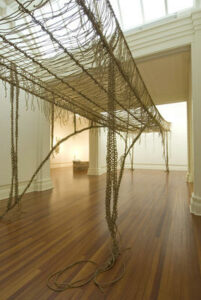MY CHOICE: Jamie Ross / May 2022
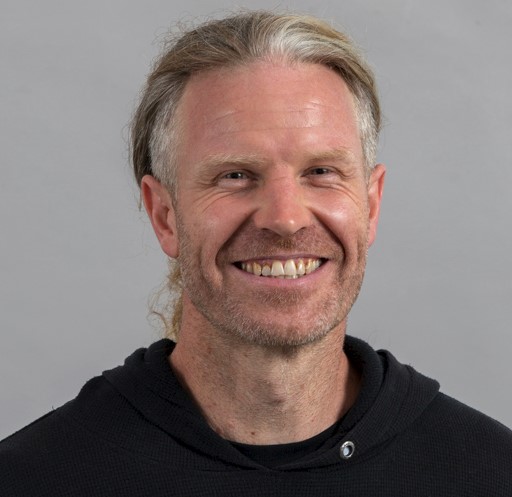

May 2022: Jamie Ross
Each month a member of our community is invited to browse our online collection and select six of their favourite artworks. Each My Choice selection, together with personal responses to the works, will be available to view on the Sarjeant Gallery website for one month at a time. The May 2022 My Choice has been selected by Jamie Ross and is available to view until 31 May, 2022.
Jamie Ross is the newly appointed preparator tasked with collection care and art installation at The Sarjeant Gallery Te Whare o Rehua Whanganui. Born in Wellington, New Zealand, Jamie is a qualified carpenter by trade who has worked on many projects nationwide within the museum industry over the last twenty years. He is an experienced professional photographer having spent several years working in the UK.
As an artist, Jamie is a self-taught weaver and sculptor, working mainly with reclaimed timber and harakeke. His artistic style explores different states of consciousness and the ethereal, ultimately trying to encourage others to look inside themselves and reflect positively on the world around them.
See Jamie’s selections on our Explore the Collection ‘My Choice Exhibition Series’ highlight here
Unknown, Portrait of Mrs Ellen A Neame, Early 20th Century, 1942.1.1
“
Ellen was married to Henry Sarjeant and it was most likely her influence that encouraged Henry to pursue his interests in the art world.
As well as acquiring works for the Sarjeant Gallery collection on their trips to Europe, Ellen and her second husband John Armstrong Neame were both accomplished artists. Ellen was also a member of the Wanganui Arts and Crafts Society. She held regular biannual exhibitions in Leicester Square, London, where Queen Mary was rumoured to have purchased at least one of her paintings at each exhibition.”
Colin McCahon, Portrait of Gordon H. Brown 1968, 2007.6.1
“I was introduced to this image of Gordon H Brown in my first week at the gallery by a colleague as we were looking at the impressive collection of books Gordon had donated to the Sarjeant collection. Gordon H Brown (b.1931) was the first professional Director of the Sarjeant Gallery and is also an artist, art critic and writer and wrote the first major book on the artist Colin McCahon (published 1982). The two first met in 1952 and Brown also painted a portrait of McCahon.
McCahon wrote in 1971: “I am not painting protest pictures. I am painting about what is still there and what I can see before the sky turns black with soot and the sea becomes a slowly heaving rubbish tip. I am painting what we have got now and will never get again.”
Hemi Macgregor, Where it’s @, 1998, 1999.5.1
“This laminated timber sculpture, Where It’s @ by Hemi MacGregor, really appeals to the storyteller in me. Woodcarving is one of the oldest types of art, common to all cultures and has been used to tell stories since the Stone Age. Visual art is (by nature) the universal symbolic language that can be understood by anybody who cares enough to engage with it. I love how Hemi MacGregor has integrated ancient technologies in the form of wood carving with the language of the present and the @ symbol being synonymous with the internet. The medium in which over 4 billion of us are connected to each other. I feel the internet is the global brain, the light at the end of the tunnel and the cutting edge of language.”
Raffaello Romanelli, Bust of Henry Sarjeant, 1922, 1922.1.65
”
The Sarjeant Gallery is a mainstay of the artistic community that not only inspires but holds the artistic ether to the Whanganui area. An atmosphere that also attracts artists to the area from around the country/globe. Would that be the case without the foundation, legacy and permanency provided by the gallery?
Leaving a legacy is the difference between being a tourist and being a citizen.
Raffaello Romanelli (1856-1928) was commissioned to carve this bust of Henry Sarjeant over a hundred years ago. His studio in Piazza Santo Spirito, a former church is still to this day a Sculpture Studio and Gallery, with Raffaello’s portraiture legacy being continued by his great-great-grandchildren.”
George Krause, 3.45: R.J, 1998, 1998.16.28
”
Initially, when given the task of picking my favourite pieces from the collection I chose all six from this series by photographer George Krause. This was the first photo to catch my attention. I am drawn to the composition, the bright blown out background, and the contours described by the contrasting shadows. The subject is Raewyne Johnson, the Gallery’s Events Co-ordinator who told me that all the photos in this series were taken in the stairwell of Tylee Cottage where Krause was artist-in-residence and that his focus here was mainly on her collar bones. What attracts me to this portrait and the series, is the idea of artists interacting with other artists. Raewyne is the subject here, she is an artist and is actively involved in the arts community.”
Regan Gentry The End of the Tether, 2008, 2008.6.1
”
The rhythmic and deliberate interlacing of the manila rope weaves into something far greater than the sum of its hitch knots. I think, like most of Regan Gentry’s work, it appears light-hearted but the title of the work gives it away. If you say you are “at the end of your tether”, you mean that you are so worried, tired, and unhappy because of your problems that you feel you cannot cope.
I love its large scale and its simplicity. I love its organic playful manner yet serious content.”
Category
Past Exhibitions 2022
